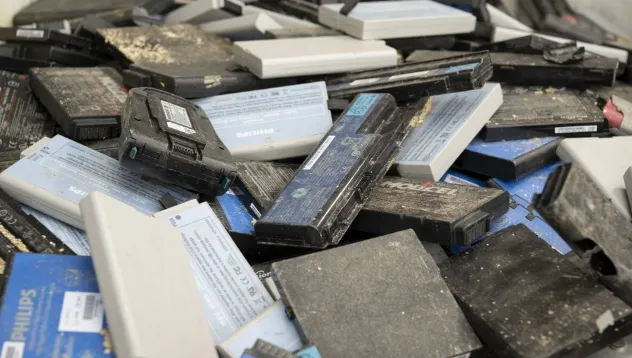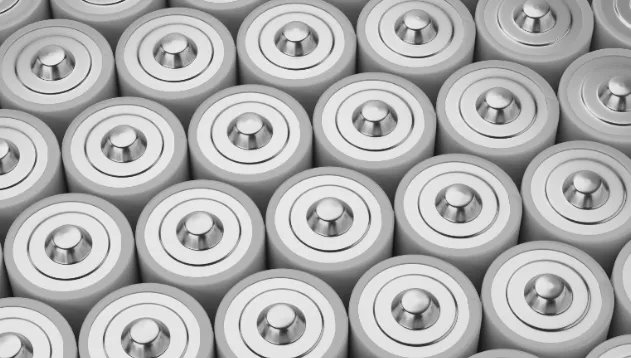Battery Recycling
We’ve launched the UK’s first ever in-house lithium-ion battery recycling service!
Our new service will involve stripping down the lithium-ion batteries and putting them through a rigorous process which extracts metals and precious metals, making them available for selling into other processes or for recycling. We are already servicing the market very successfully by recycling lithium-ion batteries from laptops and mobile phones.

Meeting the lithium-ion
battery challenge
It is no secret that sales of electric vehicles are growing rapidly in the UK and around the world. This green revolution is powered by rapid advances in technology, most notably the lithium-ion battery present in the majority of electric vehicles.
Within a few years these vehicles will be reaching the end of their life and will require treatment to ensure the environmental benefits of their lifetime is maintained. At the same time, there is a steady incumbent volume of batteries from portable applications such as laptops and mobile phones that need to be treated in a similar way.
Now accepting batteries
for recycling
R.S. Bruce Ltd is addressing this growing volume of end-of-life lithium-ion batteries in the UK and Europe by establishing a facility for recycling these batteries in Sheffield. This facility will be capable of receiving and recycling all types of secondary lithium-ion batteries and will recover valuable materials, including cathode powder, copper, and aluminium.
The process is safe, low-energy, and cost-effective, with recovery rates greater than 80%. The recovered materials are suitable for onward processing to create compounds suitable for reuse in battery manufacture.

Ensuring a circular economy
The key metals for lithium-ion batteries are Lithium, Cobalt, Nickel and Manganese which are used in varying quantities in the battery cathode and electrolyte.
These metals are mined, after which the ores processed into precursor chemicals, e.g., hydroxides or sulphates.
Other important materials are graphite (anode), copper (anode current collector) and aluminium (cathode current collector).

The metal precursors are combined in defined ratios and processed to produce cathode powders. Different formulations are used for a variety of applications. The cathode powder is coated onto the aluminium current collector and formed into a battery with the graphite anode, copper anode current collector, plastic separator and electrolyte.
Cells can be manufactured in different sizes and formats, depending on application. The three standard formats are cylindrical, pouch and prismatic. Cells can be used as individual units or built into modules or packs for larger applications such as electric vehicles or stationary storage
.A by-product of cell production is manufacturing waste, including individual components such as anode and cathode, all the way up to complete cells that have failed quality control.

At end-of-life, battery packs must be removed from their application, whether that be from vehicles, forklift trucks or other sources. At this stage, some batteries may be assessed to be suitable for reuse in secondary, less-demanding applications. However, a large proportion will be suitable only for recycling.
Before recycling, batteries must be discharged to remove as much electrical energy; this greatly reduces some of the risks associated with the further processing.
After discharging, the battery packs must be dismantled into individual modules or cells; this is a process involving great risks, requiring trained and skilled technicians.

Modules and cells are then pre-treated to recover the various materials within them, i.e., the cathode powder, graphite, copper and aluminium. This is done by shredding the modules and cells and then using a variety of mechanical and chemical processes to separate the resulting shred.
Safety is extremely important at this stage as batteries can easily auto-ignite during the shredding process, and can release hazardous gases such as hydrogen fluoride.
Great care is required to ensure the process deals with these hazards and protects both the staff and the local environment. The major product from pre-treatment is the ‘black mass’, containing the cobalt and nickel that is found in the cathode powder. Other products such as metals can be sent for further recycling.

Black mass is processed through hydro- or pyro-metallurgical processes to recover the valuable metals such as cobalt and nickel. These metals can then be used in a variety of applications, or ideally returned back to battery manufacturing processes.
Lithium recovery is an as yet underdeveloped but very important element of the process, and will be required to maximise value recovery and minimise environmental impact of batteries at end of life.



